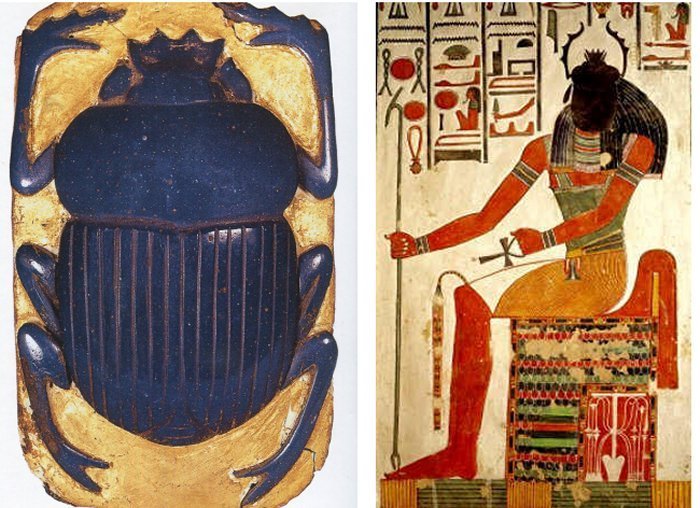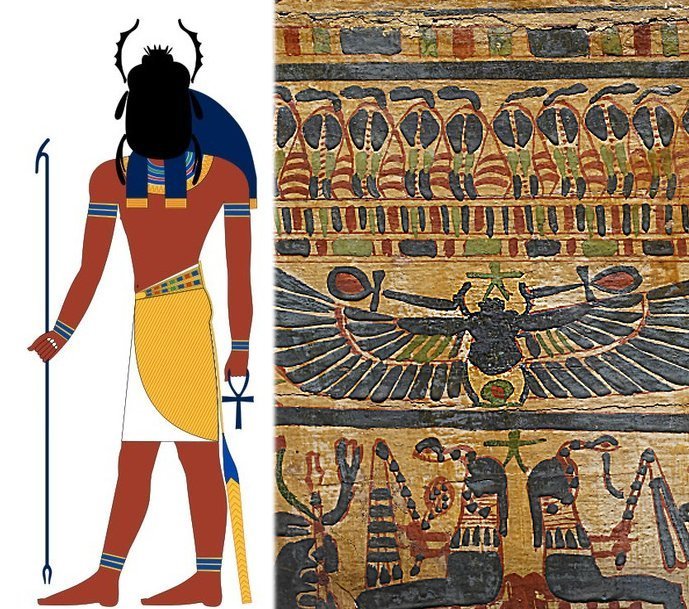Khepri – Egyptian Progenitor God, Spirit Of Life, Resurrection And The Rising Sun
A. Sutherland - AncientPages.com - Khepri is one of the important deities of Egyptian mythology. Khepri was the god of creation, the movement of the sun, life, and resurrection.
His name Khepri is also spelled as Khepera, Khepra Kheper, and Chepri, which literally means "He Who is Coming into Being."
The root word of 'Khepri' also means "to create" or "to transform" and also "scarab beetle."
Symbolism Of God Khepri
Khepri - the self-existent creator god - was associated with the scarab or dung beetle due to the scarab’s habit of rolling a ball of mud or dung along the ground. Observing the insect’s behavior, the Egyptians interpreted it as similar to the ball moving across the sky daily.
Khepri was the god of the first sunrise at the dawn of the creation, and sometimes, he also symbolized the sun in general, which means he was linked with the solar god Ra.
However, his main mythological role was that of the rising sun from the horizon.
In the texts of the Book of the Dead, Khepri appeared in reference to the symbolism of the resurrection as a divine being who possessed a secret power of constant rebirth.
Veneration Of Scarab Goes Back Thousands Of Years
Some Egyptologists believe that Khephri was among the most ancient deities of Egypt. His depictions were found in most Egyptian temples, and he was worshiped as one of the aspects of the Egyptian sun god, Ra.
It is also widely known that worship of a deity in the form of a scarab goes back to the Paleolithic epoch (10,000 to 20,000 years ago). Thus, it long predates veneration of Khepri in Egypt.
Religion And Appearance Of Khepri
The ancient Egyptians believed that Khepri created himself and associated him with rebirth, renewal, and resurrection.
Sacred scarab statue in the Temple of Amun, erected by Amenhotep III and dedicated to the sun god Atum-Kheperre, New Kingdom
There was no official cult devoted to Khepri but based on his numerous depictions, he was highly honored in ancient Egypt.
Khepri was mainly portrayed as a scarab beetle. However, in some tomb paintings and funerary papyri, he was identified as a human male with the head of a scarab or as a man wearing a scarab (or dung beetle) as a crown. Sometimes, he was wearing a crown more frequently associated with Osiris.
In paintings of the scarab, the ancient Egyptian artists usually used the scarab’s blue or lapis lazuli to emphasize the beetle’s connection to the blue sky. However, in paintings of funerary scenes, this insect was shown black.
Scarab Amulets Of Great Value
The scarab amulets used by the Egyptians as jewelry and as seals were formed in his scarab-like image. People believed in Khepri’s strong power of protection and blessings coming through these objects.
Therefore, the scarab amulets that symbolized good health and longevity were frequently unearthed in ancient Egyptian temples and houses of the living. If scarabs were placed under the coffin, it was believed that no magical or spiritual force could harm the deceased.
Medallions with scarabs were then put into the tombs of the pharaohs to speed their resurrection by the side of Osiris.
God Khepri; Right: Coffin Panel with Paintings of Funerary Scenes. Source: Walters Art Museum via Wikipedia
In the Complete Gods and Goddesses of Ancient Egypt, Richard H. Wilkinson writes that “it has been suggested that the underground tunnels of the insect take the same form as he vertical shaft and horizontal passage found in Old Kingdom mastaba tombs and that the pupae of the insect [scarab] resemble the bandaged mummy of the deceased…”
However, Wilkinson writes, “there is no indication that the Egyptians themselves recognized such similarities, for these types of embellishments to the lore of the scarab were recorded by Classical writers such as Plutarch…”
Written by – A. Sutherland - AncientPages.com Senior Staff Writer
Copyright © AncientPages.com All rights reserved. This material may not be published, broadcast, rewritten or redistributed in whole or part without the express written permission of AncientPages.com
More From Ancient Pages
-
 Shamash: Mesopotamian God Of Sun, Truth, Justice And Healing
Featured Stories | Jan 11, 2016
Shamash: Mesopotamian God Of Sun, Truth, Justice And Healing
Featured Stories | Jan 11, 2016 -
 3,400-Year-Old Cuneiform Tablet Excavated In Old City Of Alalah
Archaeology | Aug 23, 2020
3,400-Year-Old Cuneiform Tablet Excavated In Old City Of Alalah
Archaeology | Aug 23, 2020 -
 Machu Picchu Is Older Than Previously Thought – New Study Reveals
Archaeology | Aug 4, 2021
Machu Picchu Is Older Than Previously Thought – New Study Reveals
Archaeology | Aug 4, 2021 -
 4,000-Year-Old Tomb Of Titi Nab Fu, Pharaoh’s Doctor and ‘Magician’ Unearthed In Saqqara
Archaeology | Jan 8, 2025
4,000-Year-Old Tomb Of Titi Nab Fu, Pharaoh’s Doctor and ‘Magician’ Unearthed In Saqqara
Archaeology | Jan 8, 2025 -
 Spectacular Find: Lost Temple Of Goddess Artemis Has Been Found On Greek Island Of Euboea
Archaeology | Sep 22, 2017
Spectacular Find: Lost Temple Of Goddess Artemis Has Been Found On Greek Island Of Euboea
Archaeology | Sep 22, 2017 -
 On This Day In History: Hubble Space Telescope Was Launched – On April 24, 1990
News | Apr 24, 2016
On This Day In History: Hubble Space Telescope Was Launched – On April 24, 1990
News | Apr 24, 2016 -
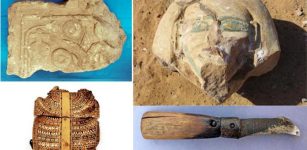 20 Mummies Discovered In Greco-Roman Tombs In Aswan, Egypt
Archaeology | Jan 21, 2022
20 Mummies Discovered In Greco-Roman Tombs In Aswan, Egypt
Archaeology | Jan 21, 2022 -
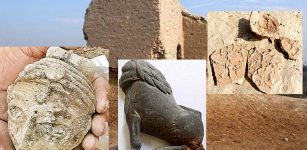 Buddhist ‘Dillu Roy’ Resembles Mohenjo Daro And Harappa And Now Unveils Its Ancient Secrets
Archaeology | Aug 25, 2020
Buddhist ‘Dillu Roy’ Resembles Mohenjo Daro And Harappa And Now Unveils Its Ancient Secrets
Archaeology | Aug 25, 2020 -
 Florida’s Ancient Calusa Kingdom Developed Sophisticatedly Engineered ‘Watercourts’
Archaeology | Apr 1, 2020
Florida’s Ancient Calusa Kingdom Developed Sophisticatedly Engineered ‘Watercourts’
Archaeology | Apr 1, 2020 -
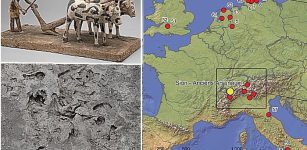 Exciting Find In The Swiss Alps – First Furrows And Animal Tracks Are Evidence Of Prehistoric Plowing
Archaeology | Apr 3, 2024
Exciting Find In The Swiss Alps – First Furrows And Animal Tracks Are Evidence Of Prehistoric Plowing
Archaeology | Apr 3, 2024 -
 Coral Castle Is Among Most Fascinating And Mysterious Buildings In Florida
Featured Stories | Sep 17, 2018
Coral Castle Is Among Most Fascinating And Mysterious Buildings In Florida
Featured Stories | Sep 17, 2018 -
 Biblical City Of Gezer: Important Ancient City Mentioned In The Amarna Letters
Biblical Mysteries | Sep 6, 2018
Biblical City Of Gezer: Important Ancient City Mentioned In The Amarna Letters
Biblical Mysteries | Sep 6, 2018 -
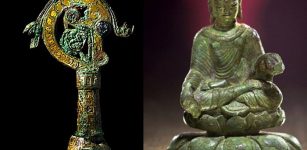 The Helgö Treasure: Bronze Buddha Statue, Coptic Scoop And A Crozier Depicting Biblical Tale Of Jonah
Artifacts | Mar 10, 2023
The Helgö Treasure: Bronze Buddha Statue, Coptic Scoop And A Crozier Depicting Biblical Tale Of Jonah
Artifacts | Mar 10, 2023 -
 Vimana Temples – Architectural Marvel Of India
Civilizations | Dec 31, 2018
Vimana Temples – Architectural Marvel Of India
Civilizations | Dec 31, 2018 -
 Homo Bodoensis Is A New Species Of Human Ancestors Who Lived Half A Million Years Ago
Archaeology | Nov 1, 2021
Homo Bodoensis Is A New Species Of Human Ancestors Who Lived Half A Million Years Ago
Archaeology | Nov 1, 2021 -
 DNA Study Reveals How Europe’s Hunter-Gatherers Adapted To A New Way Of Life – Farming
Archaeology | Nov 24, 2015
DNA Study Reveals How Europe’s Hunter-Gatherers Adapted To A New Way Of Life – Farming
Archaeology | Nov 24, 2015 -
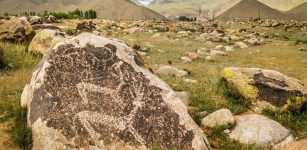 Ancient Petroglyphs Of Cholpon-Ata And Mysterious Balbals Figures That Guard Grave Sites, Kyrgyzstan
Featured Stories | Aug 24, 2015
Ancient Petroglyphs Of Cholpon-Ata And Mysterious Balbals Figures That Guard Grave Sites, Kyrgyzstan
Featured Stories | Aug 24, 2015 -
 Silla: The Most Successful Of Three Korean Kingdoms
Featured Stories | Aug 22, 2023
Silla: The Most Successful Of Three Korean Kingdoms
Featured Stories | Aug 22, 2023 -
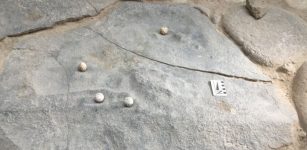 Mysterious Stone Spheres Could Be From Ancient Greek Board Game – Scientists Say
Archaeology | Sep 30, 2022
Mysterious Stone Spheres Could Be From Ancient Greek Board Game – Scientists Say
Archaeology | Sep 30, 2022 -
 Understanding The Green Sahara’s Collapse
Earth Changes | Aug 22, 2024
Understanding The Green Sahara’s Collapse
Earth Changes | Aug 22, 2024

